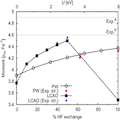Abstract
The aim of this project is to use computational and mineralogical techniques to determine the mobility of potentially toxic metallic and metalloid elements such as lead (Pb) and arsenic (As) in pyrite ash wastes.. Contaminated soils and aquifers are often linked with industrial activities or land treatments. One example is the high levels of potentially toxic metallic and metalloid elements on sites associated with old paper mills. To produce cellulose the paper mills used to dissolve wood in sulphite SO32- solutions, which were produced on site by oxidizing sulphur-bearing minerals (mostly pyrite) at high temperatures. The remaining ash, so called ‘pyrite ash’, is now found as fine- grained sand with a characteristic red-violet colour. Pyrite ash contaminated by lead and arsenic has been found in the south-west of Sweden. Mineral characterization shows that the main components of the pyrite ash are hematite (α-Fe2O3), and quartz (α-SiO2). The soils contain more than 20000 mg/kg Pb and 10000 mg/kg As. We find that Pb concentrations are independent of soil pH, but As concentrations are highest at pH < 2. In order to gain a better understanding of the mobility of Pb and As in pyrite ash wastes, we are using quantum mechanic and classical inter-atomic potential calculations to study the 1) bulk structure of hematite contaminated with Pb, As and Mg and 2) Pb and As adsorbed on hematite surfaces under different pH conditions. Traditional density functional theory (DFT) techniques cannot be applied to study α-Fe2O3. To deal with this problem we are using HYBRID functionals and DFT+U. We have found that the electronic and geometric structures of the hematite can be correctly described using the B3LYP functional. Our simulations show a phase transition into a spinel structure (magnesioferrite, MgFe2O4) when hematite is contaminated with higher concentration of Mg. Results for Pb and As will be presented on the poster. Initial calculations indicate that these elements might reduce iron(III) to iron(II) in hematite.
